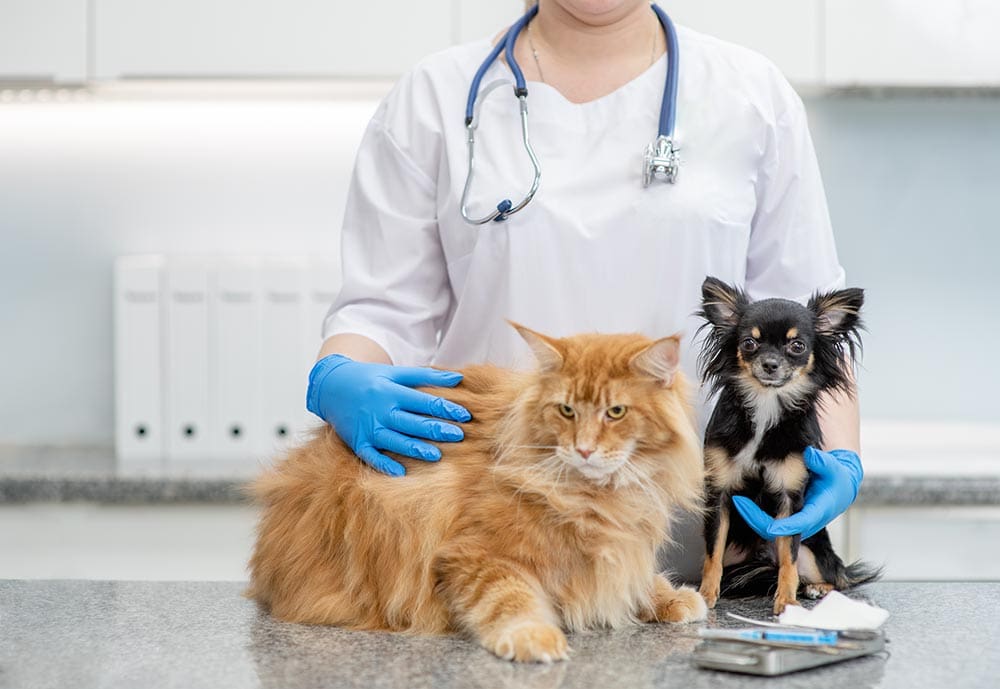
Note: This article’s statistics come from third-party sources and do not represent the opinions of this website.
Sure, your pet goes to the vet regularly, but that doesn’t necessarily mean you know a lot about pet healthcare or the pet healthcare industry. There’s a lot to be learned about this area, from the massive amounts of revenue the sector makes to what brings dogs and cats into the vet most often to how pet insurance works.
Here are 19 pet healthcare statistics that will give you more insight into your pet, their health, and how the pet healthcare industry operates.

19 Pet Healthcare Statistics
- The United States pet industry in 2020 had over $100 billion in sales, with one of the most significant expenses being veterinarian care.
- Banfield Pet Hospitals saw about half a million more pet visits in 2020 than in 2019.
- Pet supplement sales continue to grow, jumping 116% from 2019 to 2020.
- Pet poisonings are on the rise—Pet Poison Helpline reported an increase of 51% in the volume of calls received from 2020 to 2021.
- 19.7% of the pet poisonings reported were because of over-the-counter meds such as ibuprofen and Tylenol, along with herbal supplements and joint rubs.
- The number of dogs spayed or neutered in the United States dropped from 85% in 2016 to 77% in 2020.
- Almost 4.41 million pets were insured in North America by the end of 2021.
- There was an increase of 27.7% in the pet health insurance marketplace over the past year.
- In 2018, the average accident and illness insurance premiums for dogs was an estimated $566.34 per U.S. owner.
- By 2025, the worldwide pet insurance market is expected to surpass $10.2 billion.
- 83% of dogs and 17% of cats are insured in the United States.
- North America has 25 major pet insurance companies.
- Insurance coverage for accidents and illness was top of the market in 2021, with an estimated revenue of $7.6 billion.
- Per year, the typical dog owner spends $241 on vet services a year.
- The typical cat owner only spends about $125 on vet services a year.
- In 2019, 26% of dogs were brought to the vet for stomach issues, while 31.8% of cats were seen for the same.
- Roughly 1 in 3 pets requires emergency vet treatment each year.
- In the United States, there are 500 counties (mostly rural areas) that are underserved by veterinarians.
- Birds visit the vet most often, going 3.1 times a year; dogs come in second, visiting the vet 2.7 times a year.

Overview of Pet Healthcare
1. The United States pet industry in 2020 had over $100 billion in sales, with one of the most significant expenses being veterinarian care. (APPA)
2020 was a year of change, including in the pet healthcare industry. More people than ever acquired pets due to the pandemic, and perhaps because of the pandemic, they put a greater focus on their pet’s health.

2. Banfield Pet Hospitals saw about half a million more pet visits in 2020 than in 2019. (Banfield)
Banfield is the largest vet care provider in the U.S. The president of Banfield stated that this increase in pet visits occurred due to pet parents placing a priority on preventative vet care due to the pandemic.
3. Pet supplement sales continue to grow, jumping 116% from 2019 to 2020.(Kerry)
Once again, you can thank the pandemic for changing the market. Traditionally, pet supplement sales are for joint health and skin and coat health. But during the pandemic, pet parents invested in supplements to support immune health and the digestive system to keep their pets healthy.
4. Pet poisonings are on the rise—Pet Poison Helpline reported an increase of 51% in the volume of calls received from 2020 to 2021.(Smith Lane Hospital)
Pet poisonings went up from 2020 to 2021, most likely because people were home more often and engaging in new hobbies such as art or baking. The other possible reason for this increase was that more people became new pet owners during the pandemic and were unaware of household items that could make their pets ill.
5. 19.7% of the pet poisonings reported were because of over-the-counter meds such as ibuprofen and Tylenol, along with herbal supplements and joint rubs. (Preventative Vet)
People haven’t just been focused on the health of their pets, but their own health too. So, it isn’t surprising there were more opportunities for our pets to get into our over-the-counter meds and supplements.
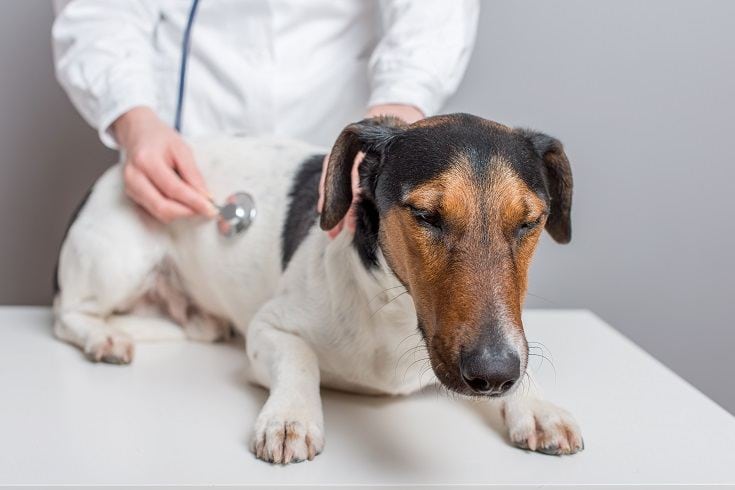
6. The number of dogs spayed or neutered in the United States dropped from 85% in 2016 to 77% in 2020. (Best Friends)
Though there’s been an upward trend of dogs being spayed and neutered in the United States since 2000, it seems to have tapered off in the past couple of years.
Pet Insurance
7. Almost 4.41 million pets were insured in North America by the end of 2021. (NAPHIA)
This was up from 3.45 million in 2020. It’s theorized the reason for this was (once again) because of the pandemic, as it brought about increased pet adoption and a higher priority placed on health.
8. There was an increase of 27.7% in the pet health insurance marketplace over the past year. (NAPHIA)
The pet insurance marketplace grew quite a bit between 2021 and 2022, which isn’t surprising considering people continue placing more emphasis on health and well-being for themselves and their pets.

Insurance premiums for dogs are higher than those for felines and have seen an increase in recent years. In 2013, the average insurance premium for pups was only $431.45.
10. By 2025, the worldwide pet insurance market is expected to surpass $10.2 billion. (Global Newswire)
Pet insurance is increasing in popularity, not only because of the focus on our pet’s health and an increase in pet adoption but also because pet insurance policies keep getting more innovative. From what items and procedures policies will reimburse for to the broader availability of multi-pet policies, pet insurance is becoming more appealing to more people.
11. 83% of dogs and 17% of cats are insured in the United States.(Today’s Veterinary Business)
More people own dogs than cats, so it’s no surprise that more dogs are insured than felines. When it comes to where these insured pets are living, 19.2% of cats and dogs were found in California, 8.7% were found in New York, and 5.8% were found in Florida.
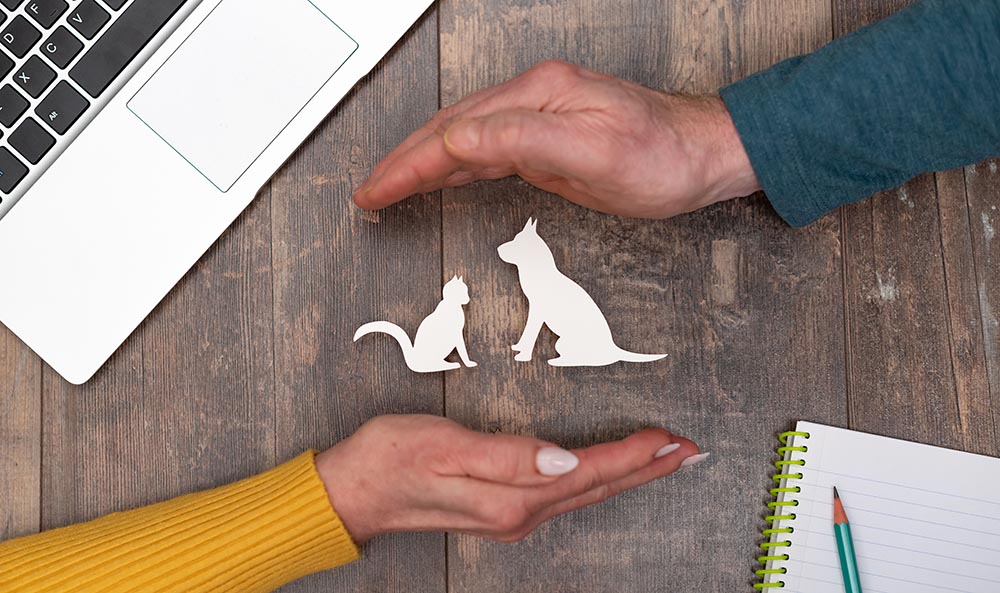
12. North America has 25 major pet insurance companies. (NAPHIA)
These 25 companies also underwrite or represent at least 20 other pet industry product brands. They also hold about 99% of the pet insurance policies in North America.
13. Insurance coverage for accidents and illness was top of the market in 2021, with an estimated revenue of $7.6 billion. (Global Market Insights)
Accident and illness insurance being at the top of the pet insurance market is due to more people taking advantage of the policies that cover both of these instead of purchasing only accident or illness. As these policies begin to cover more and more, the revenue should only increase.
Pets & Vets
14. Per year, the typical dog owner spends $241 on vet services a year.(Statista, Global Market Insights, Pet Life Today)
One can see how pet insurance comes in handy when an average dog will cost $241 a year in vet services. That’s only if they don’t get incredibly sick or need emergency care, though. Vet visits involving surgery average $621, and treatment for things such as skin allergies can be up to $1,100!
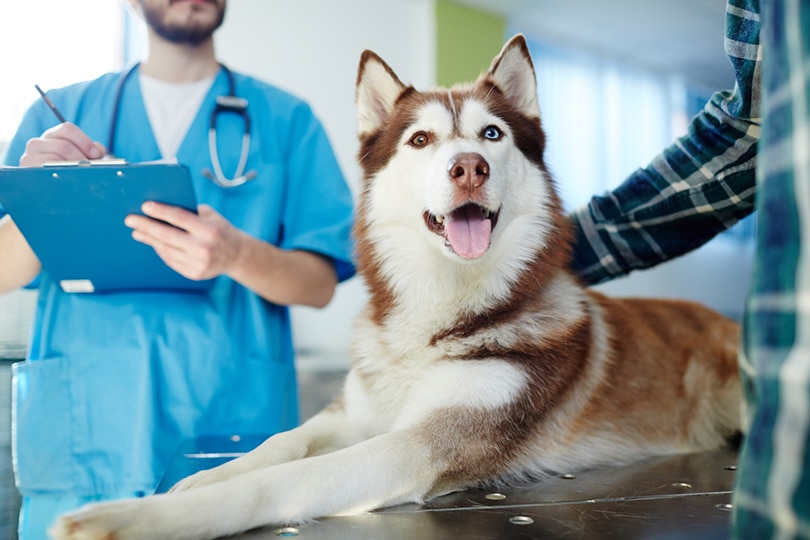
15. The typical cat owner only spends about $125 on vet services a year.(Statista)
Owning cats is cheaper than owning dogs in just about every category. Whether it’s the amount spent on vet services, the amount spent on pet insurance, or even the amount spent on food, being a cat parent costs less. In fact, in 2020, dog owners spent roughly $1,201 a year while cat owners spent about $687 a year.
16. In 2019, 26% of dogs were brought to the vet for stomach issues, while 31.8% of cats were seen for the same. (Healthy Paws)
Stomach issues top the list of reasons why pet parents bring their animals to the vet. Following that, dogs are seen most often for skin allergies, while cats are seen for urinary tract infections.
17. Roughly 1 in 3 pets requires emergency vet treatment each year.(Carroll)
Each year 1 in 3 pets requires an emergency vet visit, so be prepared! This is one reason why pet insurance can be an excellent idea; with pet insurance, even if there’s an emergency, it’ll be affordable.
18. In the United States, there are 500 counties (mostly rural areas) that are underserved by veterinarians. (Successful Farming)
There are lots of vet clinics in the United States—between 28,000 and 32,000—but that doesn’t mean there are enough vets to go around. In 2019, 500 counties and 44 states had vet shortages (more so in rural areas).
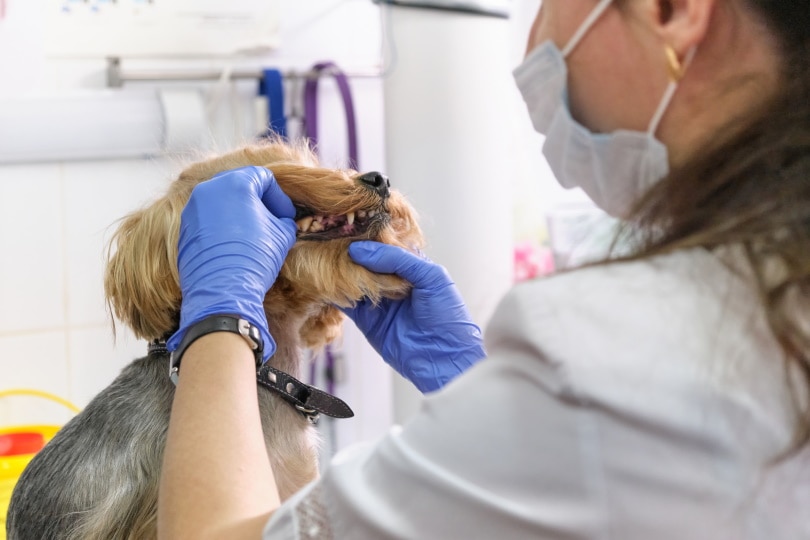
19. Birds visit the vet most often, going 3.1 times a year; dogs come in second, visiting the vet 2.7 times a year. (Brandon Galle)
You’d think dogs and cats would see the vet more than any other type of pet, but no. Instead, birds visit the vet most often. It’s difficult to say why this is the case, but perhaps it’s because it is so easy for birds to become ill if they aren’t cared for properly.

Frequently Asked Questions About Pet Healthcare
When was the first pet insurance policy in the United States issued?
While the first ever pet insurance policy came about in 1890 in Sweden and was written for a horse, pet insurance didn’t show up in the United States until 1982. That’s when a policy was created for the dog that played Lassie. (The Insured Pet)
What does a typical pet insurance policy cover?
Most pet insurance policies will vet costs associated with accidents, emergencies, injuries, and illnesses, but not costs that come with preventative care (vaccines, spay/neuter). What exactly is covered under accident and illness will vary by pet insurance company.

What do I do if I’m unsure what my pet ate is poisonous?
If you aren’t sure whether something your pet got into is poisonous, you can call the Pet Poison Helpline to find out or visit the ASPCA’s website and check their poison control center. You can also contact your vet or take your pet in for a visit.
Should I be giving my pet supplements?
Unless advised by your vet, supplements for your pet are usually unnecessary. In fact, giving your pet supplements could lead to toxicity if they are already eating a nutritionally sound diet. (Tufts University)
I’m looking for a new vet; where can I find reviews of the vet I’m considering?
You can check out USA Veterinarians for reviews of veterinarians near you. It’s also advisable to look at the Better Business Bureau for reviews and ratings.

Conclusion
Pet healthcare encompasses a lot—everything from pet insurance to vet visits to supplements for pets—and much of it is helpful to know if you’re a pet parent. Whether you’re interested in obtaining insurance for your pet to help with vet bills or finding recommendations for the best vet near you, learning about pet healthcare will let you find what you need.
Featured Image Credit: Ermolaev Alexander, Shutterstock

